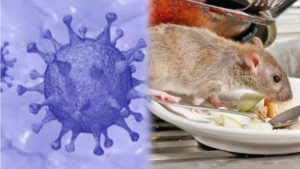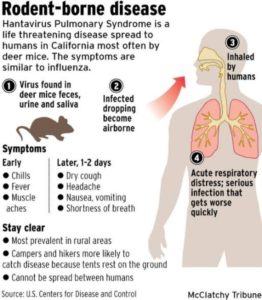A Man dies from Hantavirus in China.Here we give some information that you need to know about this virus, and how it spreads.


What is hantavirus?
An orthohantavirus is a single-stranded, enveloped, negative-sense RNA virus in the family Hantaviridae of the order Bunyavirales. These viruses normally cause infection in rodents, but do not cause disease in them. Humans may become infected with hantaviruses through contact with rodent urine, saliva, or feces 

According to the Centre for Disease Control and Prevention (CDC), hantaviruses are a family of viruses which are spread mainly by rodents and can cause varied diseases in people. It can cause hantavirus pulmonary syndrome (HPS) and haemorrhagic fever with renal syndrome (HFRS).
The disease is not airborne and can only spread to people if they come in contact with urine, feces, and saliva of rodents and less frequently by a bite from an infected host. However, the virus is shed continuously from them: into the droppings and urine they leave around the room, and into their saliva, which dries on anything they have chewed, such as nesting material. Out in the environment like this, the virus can live for several days.
Symptoms of hantavirus:


While the initial symptoms of haemorrhagic fever with renal syndrome too remain the same, it can cause low blood pressure, acute shock, vascular leakage, and acute kidney failure. HPS can’t be passed on from person to person, while HFRS transmission between people is extremely rare.
Treatment and prevention:
There is no specific treatment, cure, or vaccine for hantavirus infection. In intensive care, patients are incubated and given oxygen therapy to help them through the period of severe respiratory distress. The earlier the patient is brought in to intensive care, the better. Rodent population control is the primary strategy for preventing hantavirus infections.











